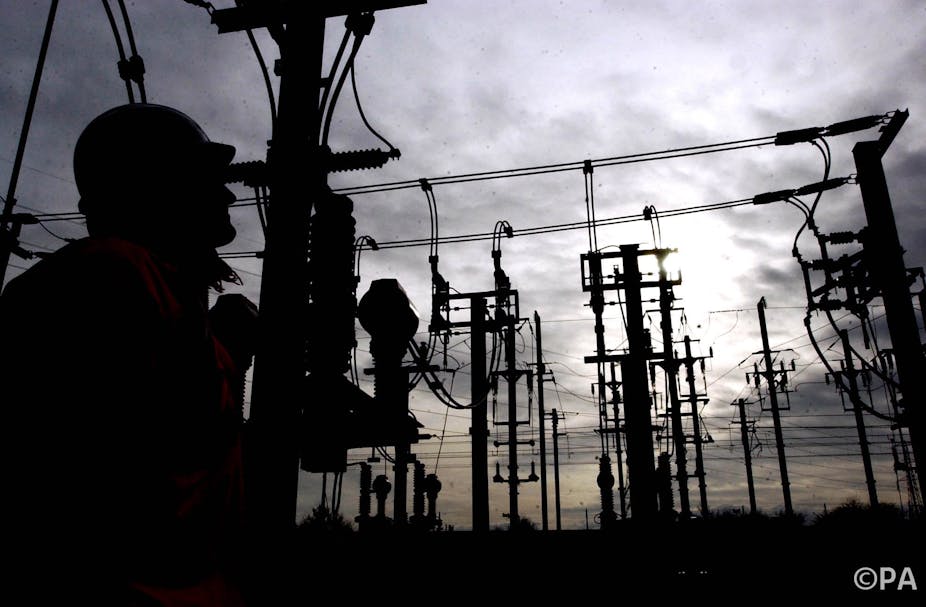It is ironic that it is the Labour frontbench leading the charge against what it calls the UK’s “broken energy market”, because practically every controversial aspect of the energy market was the creation of the last Labour governments.
For example, concerns over household energy bills stem from the creation of energy regulator Ofgem in 2000, which abolished retail energy price controls shortly after it was formed. The lack of transparency in energy companies’ costs and profits has been exacerbated by the introduction of the New Electricity Trading Arrangements (NETA) in 2001, and the growing vertical integration of energy companies: by operating as both generators, consumers and suppliers of energy, the firms can sell electricity to themselves at below market cost. The Labour government at the time failed repeatedly to refer this to the Monopolies and Mergers Commission.
Labour also introduced the Renewables Obligation in 2002, Feed-in Tariffs in 2010, and amplified the practice of obliging energy suppliers to improve the energy efficiency of their customers’ homes, through the Energy Efficiency Commitment in 2002, and then the greatly expanded Carbon Emissions Reduction Target, the latest manifestation of which is the Energy Company Obligation (ECO). These “green taxes” and obligations are perhaps more widely known as, after David Cameron’s reported outburst, “the green crap”.
But times move on – maybe the energy market does need fixing by the party largely responsible for the way it currently functions. The question is whether Labour’s proposed “Ten-Point Plan” will make matters better or worse.
Shifting energy priorities
Any answer to that question must consider the objectives of energy policy as the means to regulate, or guide, the energy market. These are generally accepted to be: keeping energy affordable, reducing carbon emissions and securing supply – inevitably referred to as “keeping the lights on”.
These three objectives rarely pull in the same direction and generate significant pressure on political priorities at different times. The effect is generally to cause politicians to flip-flop between them as the politics of the moment demand. For example, green levies such as ECO and its forerunners were introduced when green issues had a high profile. Before energy prices started rising it was politically easier to add the costs to consumer bills – partly because they were less obvious there – rather than introduce more transparent taxes, even though academics like me pointed out at the time that this was regressive.
Today, there are conflicts between energy policy objectives that any reform needs to resolve. Low-carbon energy sources are still more expensive than the fossil fuels they replace, which puts pressure on consumers whether paid for by household bills or taxation.
Power companies need to invest in new infrastructure, to be paid for by company profits that will, again, ultimately be paid for by consumers. Energy efficiency improvements to homes will reduce bills for those that get them, but the costs are recouped only slowly. Not all homes can be made more energy efficient immediately or cheaply, so bills or taxes will still need to go up in the short term before the benefits will be felt.
Piecemeal market fixes
The first three of Labour’s ten points reverse some of the decisions made, or developments tolerated, when they were last in government. They propose, rightly, to end vertical integration, re-establish a wholesale electricity pool to improve price transparency and clarify the trading arrangements that were muddied by NETA.
Three more seek to generate the confidence the energy companies need to take forward low-carbon investment, by allowing the Green Investment Bank to borrow and back low-carbon projects. The plan endorses the government’s Feed-in Tariff that would replace the Renewables Obligation, and also the 2030 decarbonisation target recommended by the Committee on Climate Change, which the government has rejected for the time being.
While welcome, it remains to be seen whether these proposals will undo the damage done by Labour’s reckless, albeit politically successful, promise of an energy price freeze. This has cast a shadow over the energy sector, making it more difficult and more expensive for energy companies to borrow money for new projects. But all these proposals are small beer compared to the two major proposals for institutional reform.
New institutions, old ideas
The most substantial of Labour’s proposals are the abolition of Ofgem, its own creation, replacing it with a “a tough new energy watchdog”, and the creation of a new Energy Security Board “to plan for and deliver on our energy needs”.
When politicians propose new institutions to solve perceived problems, the first question to ask is: are they necessary? In this case, definitely not. Ofgem behaves according to the “guidance” and legal powers given it by the government – if the government wants Ofgem to regulate energy prices or show any new teeth it considers necessary, it can simply give Ofgem the power to do so.
The proposed Energy Security Board is still a black hole, its powers and scope of operation unknown or poorly defined. But there’s no evidence such a body would make any improvement to the UK’s energy needs over current arrangements – especially if these were subjected to the targeted, well-specified reforms, some of which are among Labour’s other proposals.
Worse still, presenting new, yet-to-be-defined institutions alongside reform of the trading arrangements and industry structure will only serve to introduce a further lengthy period of uncertainty into the energy market. This will almost guarantee that the private companies currently being relied on to build the new power stations the UK needs will not build them by the time the UK needs them. If Labour really wants to keep the lights on, perhaps it should have just declared that the government will build the power stations itself – and then we really would be back to the pre-Thatcher days of the Central Electricity Generating Board.

